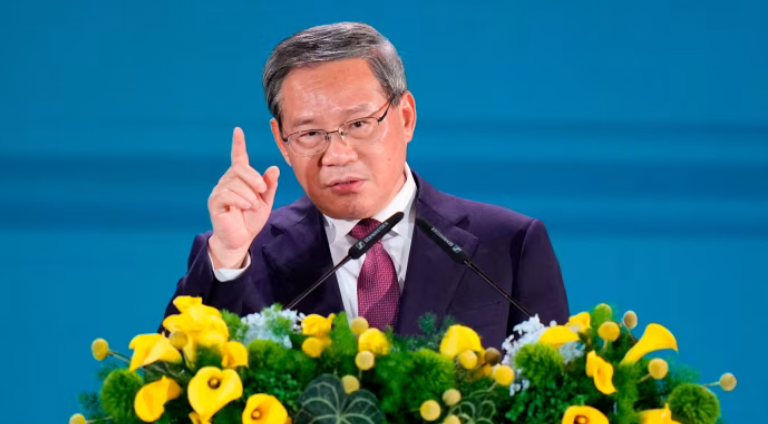
Amid US retraction, China narrows ties with nations of Gulf and Asia, in a movement that promises to redesign world trade routes
In his speech to Southeast Asian and Middle East leaders in Kuala Lumpur this week, Chinese Prime Minister Li Qiang broadcast a clear message: at a time when US President Donald Trump shakes the global trade system, Beijing wants to do business. At a gala dinner after dome meetings with the Southeast Asian Nations Association (Asean) and the Gulf Cooperation Council (CCG)Li pointed out that the countries together represent almost a quarter of the economy and the world population, but a much smaller portion of global trade.
“Amid geopolitical conflicts, rivalries and intensified confrontations, we can create long -term strategic opportunities when we deepen mutual trust,” he said. “In the midst of growing protectionism and unilateralism, we can release huge market opportunities when we continue to open even more.”
This message has a particular resonance for many of the leaders present, whose nations depend on trade with the US, which made them extremely vulnerable to Trump’s commercial tariffs last month-although a decision of a US commercial court on Wednesday night, invalidating Trump’s “Liberation Day” rates, has added uncertainty.
“All of this is weighing on everyone’s minds here,” Liew Chin Tong, Deputy Malaysian Commerce Minister, told Financial Times. “This is a inflection point – it is the biggest change in global trade since 1945.”
“Everyone is thinking about what to do beyond the US market,” Liew added.
Expansion of partnerships
The meeting in Kuala Lumpur was only the second time heads of state and government of the ten countries of Asean and the six gulf nations gathered to strengthen commercial ties-and it was the first time they were accompanied by a Chinese prime minister and his extensive delegation.
The countries that participated in the summit have a combined GDP of $ 25 trillion and a population of 2 billion people. But Li said the trade between the blocks represented only 5% of the total global.
Liew stated that the meeting made it clear that the Chinese will talk to the Gulf states “with or without the countries of Southeast Asia.”
“We need to make sure we are part of these conversations,” said the deputy minister.
In Mandarin East, across the street of the main convention center, Middle East, China and Southeast Asia delegates exchanged cards and discussed investments and joint ventures.
“The Chinese are trying to get involved in every business,” said an executive from a Malaysian building company. “They have always been interested in the region, but now they are saying, ‘If the US don’t want to work with you, we’ll work.’ It’s really hard to avoid them.”
Among the sealed agreements in Kuala Lumpur was an agreement for state -owned China Harbor Engineering Company developing a port and industrial center on the northeast coast of Malaysia.
In addition to political leaders, several senior business figures also participated in conversations, including Khairussaleh Ramli, CEO of Maybank, while the great Chinese entourage included executives from Bank of China and the ZTE telecommunications group.
Diplomatic maneuvers and commercial pressures
ASEAN is in the process of closing a trade agreement with the six CCG member nations. Anwar Ibrahim, Malaysian Prime Minister and Asean president this year, invited China to participate in this week’s conversations a few days before Trump won the US presidency last November.
Chinese diplomats have made a charm offensive in Southeast Asia since the US reciprocal tariffs were revealed on April 2. President Xi Jinping embarked on a tour of the region, seeking to avoid a perceived threat that the US could use negotiations with countries about their eventual tariffs to restrict the global influence of Beijing.
Last week, Malaysian and Singapore Ministers of Commerce warned that Southeast Asian countries were under pressure to choose one side between the two global superpowers.
Southeast Asia is among the regions that would be better affected by Trump fares, with Vietnam and Cambodia among countries that have large commercial surpluses with the US and received taxes of over 40%. Washington has set a deadline for implementing the rates that expire in July to allow countries to negotiate.
Asean leaders agreed this week that any concessions made to the US in exchange for reduced rates should not occur at the expense of other countries within the bloc.
Anwar was questioned during the summit if China’s presence showed that Asean countries were favoring their powerful US in the US. He replied that his goal was still to maintain both economic superpowers beside him.
“If this means working with the Chinese, yes, we will do [isso]. With the United States? Yes, we have to do it, ”he said.“ It makes a lot of sense to continue to engage and have reasonably good relationships. ”
He added that he personally wrote Trump to request a US-Asean summit later this year. Malaysian government officials said they were still waiting for Washington to define a date.
“The US is building a wall around it – we have to decide what we will do next,” Liew added.
With information from Financial Times*
Source: https://www.ocafezinho.com/2025/05/29/china-costura-aliancas-em-momento-decisivo-para-o-comercio/

